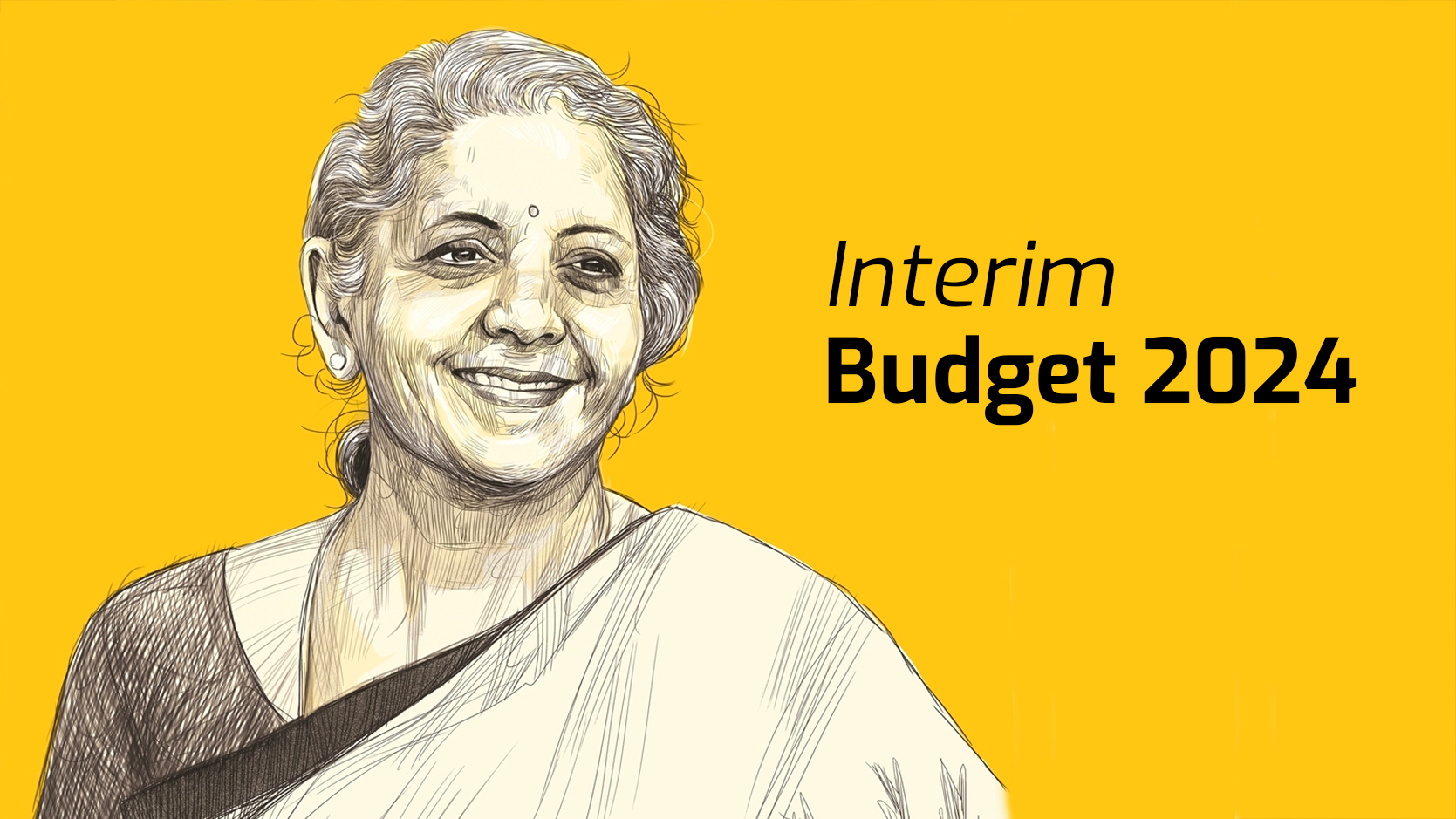Laws that regulate minority institutions do not breach secularism, says Supreme Court
Why in News?
Chief Justice of India says a State has a right to legislate to improve the excellence of a government-aided minority-run institution.
What is Secularism?
Secularism is an ideology that emphasises the separation of religion and the state and the neutrality of the government with respect to religious beliefs. It has broadly two meanings:
- Separation of religion from the state i.e. Dharm Nirpekshta.
- Equal respect to all religions by state i.e. Sarva Dharma Samabhava.
The Indian constitution aims for a secular state where all religions are treated equally.
Current Judgement
The Supreme Court clarified that laws regulating institutions run by religious or linguistic minorities do not inherently violate the principles of secularism. This remark was made while hearing a challenge to the Allahabad High Court’s decision to strike down the Uttar Pradesh Board of Madrasa Education Act, 2004.
Constitutional Provisions
| Provision | Description |
|---|---|
| Article 30(1) | Provides the right to minorities to establish and administer educational institutions of their choice. |
| Article 28 | Prohibits religious instruction in educational institutions fully funded by the State. |
| Article 29 | Provides the right to conserve distinct language, script, or culture. |
Points of Discussion
Regulating Institutions and Secularism
Supreme Court Observation: The mere fact that an institution belongs to a particular community does not automatically mean that laws regulating it breach secularism.
Allahabad High Court Verdict: Struck down the 2004 Act regulating madrasas, arguing that it violated secular principles.
State’s Right to Legislate
CJI’s Argument: The State has a legitimate interest in regulating government-aided institutions, including those run by minorities, to improve educational standards and ensure students receive a broad-based education essential for leading productive lives.
Article 30 and Educational Institutions
CJI’s View: Article 30 allows minorities to establish and administer educational institutions, which are not solely confined to religious teachings. For instance, minority institutions can offer subjects like medicine or engineering, not just religious instruction.
Additional Facts for Context
- Minority Rights Protection: Along with Article 30, Articles 29 and 25 ensure that minority communities have the right to preserve their language, culture, and religious practices.
- Supreme Court’s Precedent: The Court has previously held that the State can regulate minority institutions to ensure educational standards without infringing on their autonomy (TMA Pai Foundation case, 2002).
Conclusion
The Supreme Court affirmed that laws regulating minority institutions uphold secular principles, balancing minority rights with the state’s role in ensuring quality education.
Supreme Court says secularism a core part of the Constitution
Why in News?
In 1973, the largest Bench in the history of the Supreme Court had held that the Preamble was an integral part of the Constitution in the Kesavananda Bharati case.
Definition and Principles of Secularism
Secularism is the principle of separating religion from political and civic affairs. It advocates for religious neutrality and equal respect for all religions.
Constitutional Provisions
- Article 25-28: These articles guarantee the freedom of religion, allowing individuals to practice and propagate their faith.
- Article 15: Prohibits discrimination on grounds of religion, race, caste, sex, or place of birth.
- Fundamental Rights: The Constitution provides for freedom of conscience and the right to freely profess, practice, and propagate religion.
Historical Evolution
The concept of secularism was influenced by India’s colonial history, the struggle for independence, and the need for communal harmony in a diverse society. The framers of the Constitution aimed to create a secular state to prevent communal conflicts and ensure social justice.
Types of Secularism
- Positive Secularism: Recognizes and respects the role of religion in public life while ensuring that the state remains neutral.
- Negative Secularism: Advocates for a complete separation of religion from state affairs.
Overview of Recent Judgement
In a recent ruling, the Supreme Court of India reiterated that secularism is an integral part of the Basic Structure Doctrine of the Constitution. The court made these observations while hearing petitions challenging the insertion of the words “socialist” and “secular” into the Preamble through the 42nd Constitutional Amendment in 1976.
Key Highlights
- Secularism: The Court emphasized that secularism has always been a core element of the Basic Structure of the Constitution. This is inferred from principles like equality and fraternity, which are enshrined in the Constitution.
- Socialism: The petitioners argued that socialism restricts personal liberty and individualism. However, the Supreme Court clarified that the Indian context of socialism emphasizes equality of opportunity and equitable distribution of the nation’s wealth.
- Kesavananda Bharati Case: In 1973, the Supreme Court held that the Preamble is an integral part of the Constitution and is subject to amendments as long as the Basic Structure remains intact.
- 42nd Constitutional Amendment (1976): This amendment added the terms “socialist” and “secular” to the Preamble. The petitioners contested the retrospective application of these changes from November 26, 1949.
Context of the Case
The case revolves around petitions questioning the inclusion of “socialist” and “secular” in the Preamble, with arguments ranging from concerns about personal liberty to the retrospective application of the amendment.
Court’s Stand
The Supreme Court dismissed the petitioners’ argument, asserting that secularism is a part of India’s democratic ethos and foundational to its constitutional framework.
Additional Facts
- Basic Structure Doctrine: Established in the Kesavananda Bharati case (1973), this doctrine holds that certain elements of the Constitution, such as secularism, cannot be amended or altered by Parliament.
- Secularism in India: India follows a model of positive secularism, which allows the state to intervene in religious matters to ensure equality and protect individual rights.
Reached agreement with China on LAC patrolling, resolution of friction points: India
Why in News?
Both arrive at an agreement on patrolling arrangements, and resolution of all remaining friction points, says Foreign Secretary; gone back to where the situation was in 2020, says Jaishankar.
Context
India announced a significant agreement with China on patrolling arrangements and the resolution of the military standoff at the Line of Actual Control (LAC), particularly in the areas of Demchok and Depsang.
Historical Context of India-China Relations at the LAC
The military standoff between India and China in 2020, primarily triggered by the Galwan Valley clashes, led to a breakdown in patrolling and escalated military deployments on both sides of the LAC. This agreement signifies a potential return to normalcy in bilateral relations, although key issues such as demobilization and trust-building remain.
Diplomatic Significance of the BRICS Summit
The BRICS Summit offers a diplomatic platform for both India and China to further dialogue on regional stability, economic cooperation, and conflict resolution. The timing of the agreement just before this major summit could pave the way for further high-level engagements between the two nations.
Future Implications
- Patrolling: The agreement enables the resumption of patrolling along the LAC, restoring the situation to pre-2020 conditions.
- Buffer Zones: Details regarding the status of buffer zones established during the standoff remain ambiguous.
- Deinduction and Demobilization: While disengagement has been achieved, further steps such as deinduction and demobilization of troops are expected to follow.
- Diplomatic Progress: This agreement could pave the way for further bilateral discussions, particularly with the potential for a meeting between India & China.
Conclusion
The 2024 India-China LAC agreement aims to reduce tensions and restore normalcy, but long-term peace requires ongoing dialogue and cooperation.
What is the Z-Morh project in Kashmir, where 7 were killed by militants?
Why in News?
This is the first militant attack on a key infrastructure project in Jammu and Kashmir. Here’s why the Z-Morh tunnel project is important.
Context
The recent attack on the Z-Morh tunnel project in Jammu and Kashmir, which resulted in the death of seven workers, marks a significant escalation in militant activities targeting key infrastructure in the region. This incident highlights the ongoing security challenges in Jammu and Kashmir, particularly concerning major development projects.
Key Facts
| Aspect | Details |
|---|---|
| Location | Ganderbal district, Jammu and Kashmir |
| Length of Tunnel | Length of Tunnel |
| Connecting Points | Sonamarg health resort and Kangan town |
| Strategic Importance | Part of Zojila tunnel project for all-weather connectivity to Ladakh |
Importance of the Z-Morh Tunnel
- All-Weather Connectivity: The Z-Morh tunnel is essential for ensuring all-weather access to Sonamarg, a popular tourist destination. This region is highly susceptible to snow avalanches, rendering the road closed for significant portions of the winter. The tunnel is expected to facilitate year-round travel, thereby enhancing tourism and economic activity in the region.
- Strategic Military Access: The tunnel plays a crucial role in bolstering the Indian military’s logistical capabilities. By improving access to Ladakh, it ensures that troops can be deployed quickly to border areas, especially given the heightened tensions with both Pakistan and China. The Zojila tunnel, which connects Sonamarg to Drass in Ladakh, is also under construction, and the Z-Morh tunnel will serve as a vital link in this strategic network.
- Reduction in Air Transport Dependency: With improved road connectivity, the Indian Army can rely less on air transport for supplies and troop movement, resulting in cost savings and increased operational efficiency. This shift is particularly significant for forward locations in Siachen and Eastern Ladakh, where air maintenance has traditionally been essential.
Conclusion
The Z-Morh tunnel project improves Jammu and Kashmir’s connectivity, but recent attacks highlight security threats, necessitating measures for stability and infrastructure advancement in the region.
Why has India been accused of hosting a shadow fleet? | Explained
Why in News?
What are Flags of Convenience? How do corporations with large fleets obscure ownership and origin of cargo? What are the different ways through which ships make sure they don’t lose their insurance?
Introduction
In the wake of sanctions against Russia due to its invasion of Ukraine, global media has raised concerns about the concept of a “shadow fleet.”
Shadow Fleet: refers to vessels that transport Russian crude oil to international markets, often circumventing sanctions. It comprises ships engaged in illegal operations for the purposes of circumventing sanctions, evading compliance with safety or environmental regulations, avoiding insurance costs, or engaging in other illegal activities.
India has been accused of hosting such a fleet, which allegedly “launders” Russian oil through complex shipping networks and ownership structures.
Global Shipping Structure
- Major Shipping Nations:
- Greece: Owns 20% of the global merchant shipping fleet.
- China: Recently overtook Japan to become the second largest shipping fleet owner.
- Major shipbuilding nations: China, Japan, and South Korea.
- Marine Insurance & Regulations: Primarily controlled by Europe (UK) and regulated through U.S. sanctions.
Flags of Convenience (FoCs)
FoCs refer to countries where ships are registered, often for tax avoidance or minimal regulatory scrutiny. Key features include:
- Primary Users: Panama, Liberia.
- Advantages: Avoid strict regulatory oversight, reduce taxes, obscure ownership.
- Example: A ship owned by a Turkish entity may switch its registration to Liberia to bypass sanctions on Russian oil.
India’s Alleged Role in the Shadow Fleet
Background
With the imposition of sanctions on Russian oil (limited to $60/barrel), India allegedly struck deals with Russian shipping entities. Indian firms, especially those based in Dubai, are accused of certifying Russian ships via the Indian Register of Shipping (IRS).
IRS Role
The IRS denies involvement in illegal activities and emphasizes that its role is limited to vessel safety certifications. It reports that vessels certified by them are not flagged under Russia but rather Liberia and Cyprus.
Challenges in Enforcing U.S. Sanctions
- Complex Ownership Structures: Ships often operate under shell companies and change names or flags to avoid detection.
- Voluntary Disclosure: Stakeholders often disclose ownership and operations voluntarily, making enforcement difficult.
- Economic Impact: Rigorous enforcement of sanctions on Russian oil could disrupt global supply chains and economies.
Conclusion
India’s alleged role in the shadow fleet underscores global shipping complexities, revealing limitations in sanction enforcement and challenges in regulating multi-layered ownership structures effectively.
‘Some slackening of momentum but GDP may have risen 6.8% in Q2’
Why in News?
Slowdown partly attributable to idiosyncratic factors like unusually heavy rains in August and September, and Pitru Paksha, RBI officials said in an article in the central bank’s October Bulletin.
Slackening Defined
Slackening refers to a reduction in the momentum of economic growth or activity. It implies a decrease in the pace of economic expansion, which can manifest in various indicators.
Indicators of Slackening
- Gross Domestic Product (GDP): A decrease or slower growth rate in GDP can indicate slackening.
- Employment Rates: Slower job creation or rising unemployment rates may signal economic slackening.
- Consumer Spending: A decline in consumer confidence and spending can contribute to slackening momentum.
- Business Investment: Reduced business investments in infrastructure, technology, or expansion can signify a slowdown.
Causes of Slackening
- External Factors: Global economic downturns, geopolitical tensions, or trade disputes can impact domestic growth.
- Domestic Challenges: Issues such as inflation, high-interest rates, or policy uncertainty may dampen economic activity.
- Supply Chain Disruptions: Interruptions in supply chains can affect production and consumption.
What RBI Says
India’s Gross Domestic Product (GDP) is anticipated to grow by 6.8% in the second quarter (Q2) of the financial year 2024-25. This reflects a slight increase from the 6.7% growth recorded in the first quarter (Q1). However, this growth trajectory is experiencing some challenges due to various factors, including unusual weather patterns and cultural observances.
Key Insights
- GDP Growth Projections: The RBI’s economic activity index indicates a GDP growth rate of 6.8% in Q2, supported by robust domestic economic activities despite external geopolitical tensions.
- Slackening Momentum: Some high-frequency indicators, such as GST collections, automobile sales, bank credit growth, merchandise exports, and the Manufacturing Purchasing Managers’ Index (PMI), show a decline in momentum due to:
- Unusually heavy rainfall
- Pitru Paksha, a period of mourning in Hindu culture that may affect economic activity.
Economic Resilience
Despite the observed slackening, RBI officials highlight the resilience of the Indian economy. Consumer perceptions regarding current conditions and future expectations have improved, and there remains a positive outlook among industry players regarding growth prospects.
- Investment Outlook: Encouraging signs in private investment and consumption spending are expected to rise during the festival season.
- Supply Chain Dynamics: Supply chain pressures eased in September, although they remain susceptible to geopolitical risks that escalated in October.
Inflation Dynamics
Inflation has fluctuated, staying below the RBI’s median target of 4% for two months before rising to 5.5% in September, primarily driven by food prices. Key observations include:
- Food Price Pressures: Prices of vegetables may stabilize due to a robust kharif harvest, while oils and fats are expected to exert ongoing inflationary pressures.
- Impact of Global Tensions: Heightened geopolitical tensions, particularly in the Middle East, may lead to increased commodity prices, affecting inflation and growth prospects.
Conclusion
The RBI’s assessment underscores the complex interplay of domestic growth prospects and external challenges, emphasizing the need for cautious monitoring of economic indicators.
How Policies Shape High-Performance Building Standards and Climate Goals
Why in News?
Governments are promoting high-performance buildings for energy efficiency and carbon neutrality, with India making strides through its National Action Plan on Climate Change initiatives.
Introduction
High-Performance Buildings (HPBs) are increasingly recognized as key solutions in addressing climate change through energy efficiency, resource management, and carbon neutrality. These buildings reduce greenhouse gas emissions, cut operational costs, and improve occupant well-being. Globally, governments are adopting policies and financing mechanisms to promote HPBs as part of their climate mitigation strategies. India is making significant strides through initiatives such as the National Action Plan on Climate Change (NAPCC) and related frameworks.
Aspects of High-Performance Buildings (HPBs)
| Aspects | Description |
|---|---|
| Energy Efficiency | Central to HPBs, focusing on reducing energy consumption through efficient designs and technologies. |
| Carbon Neutrality | HPBs are aligned with climate goals to reduce carbon footprints through sustainable practices. |
| Water Conservation | Minimizing water usage through efficient water management systems. |
| Operational Costs | Lowered through energy and water savings, leading to better financial returns for businesses and owners. |
| Occupant Well-Being | Enhanced indoor air quality and comfort levels contributing to better productivity and health. |
India’s Initiatives in Energy Efficiency Policies
India has integrated HPB promotion into its climate action policies, including:
- Energy Conservation Building Code (ECBC): Aims to reduce buildings’ energy demand by 30%.
- Green Rating for Integrated Habitat Assessment (GRIHA): Certifies projects based on sustainability practices.
- Indian Green Building Council (IGBC): Promotes energy-efficient designs with over 14,000 certified projects across 12.5 billion sq. ft.
- National Mission for Enhanced Energy Efficiency (NMEEE): An important initiative under NAPCC promoting energy-saving measures in industries and buildings.
Financing Mechanisms for HPBs
| Financing Mechanisms | Description |
|---|---|
| Carbon Credits | Tradable permits that allow companies to offset carbon emissions by investing in carbon-reducing projects, such as HPBs. |
| Green Bonds | Bonds issued specifically for sustainability projects; green bonds reached $269.5 billion in 2020. |
| Climate Funds | Global funds like the World Bank and Green Climate Fund provide financial support for energy-efficient building projects. |
Conclusion
High-Performance Buildings (HPBs) are integral to climate mitigation efforts globally. Through energy-efficient designs, enhanced property values, and financial incentives like carbon credits and green bonds, HPBs present a sustainable pathway for the building sector. India, under initiatives like the ECBC and GRIHA, is progressively adopting HPBs, but scaling these efforts requires stronger policy enforcement and financial support.
The Case for a Nature Restoration Law in India
Why in News?
The law enacted by the European Union recently is a model worth following.
Introduction
India is facing severe environmental challenges, including land degradation, desertification, and biodiversity loss. A comprehensive Nature Restoration Law (NRL), modeled after the European Union’s (EU) NRL, could offer a systematic approach to reversing these trends. This article proposes the need for such legislation to restore ecosystems, mitigate climate change, and support sustainable development.
States with High Land Degradation
- Gujarat
- Karnataka
- Maharashtra
- Rajasthan
EU’s Nature Restoration Law (NRL)
The EU’s NRL, adopted in June 2024, mandates restoration of at least 20% of land and sea areas by 2030, aiming to restore all ecosystems by 2050. It focuses on diverse ecosystems, including forests, rivers, agricultural lands, urban spaces, and planting 3 billion trees.
Relevance for India
India’s increasing land degradation and desertification call for a similar legislative intervention. Several Indian initiatives, such as the Green India Mission and Pradhan Mantri Krishi Sinchayee Yojana, address these issues but lack a comprehensive, legally binding framework for ecosystem restoration. A Nature Restoration Law could enhance the effectiveness of these programs.
Potential Framework for India’s NRL
- Wetland Restoration: Target 30% restoration of critical wetlands like the Sundarbans and Chilika Lake by 2030.
- Biodiversity in Agriculture: Promote agroforestry and sustainable agricultural practices.
- River Restoration: Focus on reviving free-flowing rivers such as the Ganga and Yamuna.
- Urban Green Spaces: Ensure no net loss of green spaces, promoting urban forests.
Economic and Social Benefits
Nature restoration could contribute up to $10 trillion globally by 2030 (WEF). In India, restoring degraded lands would improve agricultural productivity, water security, and create millions of jobs in rural areas. It would also help India meet Sustainable Development Goals (SDG) 15 (life on land) and combat the effects of climate change by enhancing carbon sinks.
Need for Legislative Action
India’s land degradation, biodiversity loss, and growing environmental crises necessitate a legal mandate for nature restoration. The clock is ticking, and a law akin to the EU’s NRL could help India restore its ecosystems, contribute to economic growth, and enhance climate resilience.
An Approaching Milestone in Constitutional Governance
Why in News?
India has every reason to celebrate 75 years of constitutional governance.
Introduction
As India commemorates 75 years since the adoption of the Constitution on November 26, 2024, it is crucial to reflect on the values that have sustained the nation’s democracy. India’s constitutional governance is not just a set of laws but a culture that permeates the collective consciousness of the people. Over these seven decades, core values like respect for democratic institutions, smooth transitions of power, protection of rights, federalism, and the role of media and civil society have shaped India’s democratic ethos.
Constitutional Values Shaping India’s Governance
| Value | Explanation | Example/Impact |
|---|---|---|
| Respect for Democratic Institutions | India’s Constitution, adopted in 1949, was designed to accommodate a young nation with limited resources. Yet, through its democratic processes, it has seen significant socio-economic growth. | Over 65.79% of voter turnout in the 2024 general elections, reflecting strong faith in democratic institutions and their role in India’s development. |
| Smooth Power Transitions | Despite political diversity, India has witnessed the peaceful transition of power between various political parties, fostering stability and faith in electoral outcomes. | The successful transition of power after every general election, regardless of which party holds the majority. |
| Protection of Rights and Freedoms | The Constitution guarantees fundamental rights, with the judiciary playing a vital role in upholding them. This reflects the vision of the framers who emphasized checks on state power. | Landmark judgments by the Supreme Court, including the right to privacy as a fundamental right (2017) and decriminalization of homosexuality (2018). |
| Federalism | The framers accounted for India’s diversity by promoting federalism, granting States autonomy while fostering a collective national identity. | The 73rd and 74th Constitutional Amendments strengthened local governance through Panchayati Raj Institutions and Municipalities. |
| Role of Media and Civil Society | Media and civil society have contributed to the vitality of democracy, despite challenges in autonomy and economic pressures. They remain crucial for maintaining transparency and accountability. | The media’s role in exposing corruption (e.g., the 2G scam) and promoting civil society movements (e.g., the Right to Information movement). |
Comparative Timeline of Key Constitutional Developments
| Year | Event | Impact |
|---|---|---|
| 1949 | Constitution Adopted | Laid the foundation for democratic governance and the protection of individual rights. |
| 1951-52 | First General Election | Marked the beginning of India’s democratic journey with a 60% voter turnout. |
| 1992-93 | 73rd & 74th Constitutional Amendments | Strengthened local governance through Panchayati Raj Institutions and Urban Local Bodies. |
| 2017 | Right to Privacy Judgment | Expanded the scope of fundamental rights to include privacy as an intrinsic part of the right to life and liberty. |
| 2023 | Nari Shakti Vandan Adhiniyam (Women’s Reservation) | Reserved 33% of seats for women in the Lok Sabha and State Assemblies, promoting gender equity in representation. |
Conclusion
India’s 75 years of constitutional governance highlight the resilience of democratic values, with the Constitution evolving alongside socio-political changes, fostering unity and promoting citizen well-being.
Culture and Society: On Upholding Section 6A of the Citizenship Act
Why in News?
Supreme Court of India verdict on citizenship law for Assam helps avoid fresh problems.
Context
The Supreme Court of India upheld Section 6A of the Citizenship Act, 1955, in a 4:1 verdict. This provision, introduced as part of the Assam Accord (1985), provides a legal framework to determine citizenship in Assam, primarily in relation to those who migrated from East Pakistan (now Bangladesh).
Historical Context and Legal Provisions: Section 6A of the Citizenship Act, 1955
| Date | Description |
|---|---|
| Pre-1966 Migrants | Immigrants who entered Assam before January 1, 1966, are deemed citizens. |
| 1966-1971 Migrants | Those entering between January 1, 1966, and March 25, 1971, must register and are ineligible for voting rights for 10 years from the date of detection as foreigners. |
| Post-1971 Migrants | Treated as illegal immigrants and subject to deportation. |
Supreme Court Verdict
- Historical Context: The Court upheld Section 6A, recognizing its importance in balancing the humanitarian concerns for immigrants with the cultural and political rights of the Assamese people.
- Differential Treatment for Assam: The argument that Assam is treated differently from other states was dismissed. The Court held that Parliament is empowered to enact special provisions for citizenship based on historical contexts.
- Demographic Anxiety and Fraternity: Supreme Court acknowledged the demographic concerns but argued that such fears should not threaten fraternity or create challenges to inter-state migration under the guise of cultural protection.
- Repercussions of Striking Down Section 6A: Invalidating Section 6A would have disrupted the citizenship determination process, particularly as the National Register of Citizens (NRC) is incomplete, with over 19 lakh people identified as non-citizens.
Observations
- Cultural Preservation vs. Humanitarian Approach: Section 6A strikes a balance between allowing migrants a path to citizenship while safeguarding the cultural identity of Assamese people.
- Operation Searchlight (1971): The cut-off date of March 25, 1971, corresponds to the start of Pakistan’s military operation in East Pakistan, which led to mass migration to India.
Additional Facts
- Assam Accord (1985): Signed between the Government of India and the All Assam Students Union (AASU), it aimed to address the concerns of illegal immigration while protecting the cultural identity of Assam.
- NRC in Assam: The NRC process, aimed at identifying genuine Indian citizens, remains incomplete and controversial, with significant political and social implications in the region.
Conclusion
The Supreme Court upheld Section 6A, balancing humanitarian concerns with Assam’s cultural identity, avoiding complications amid the unresolved NRC process and acknowledging Assam’s unique historical context.
Array




